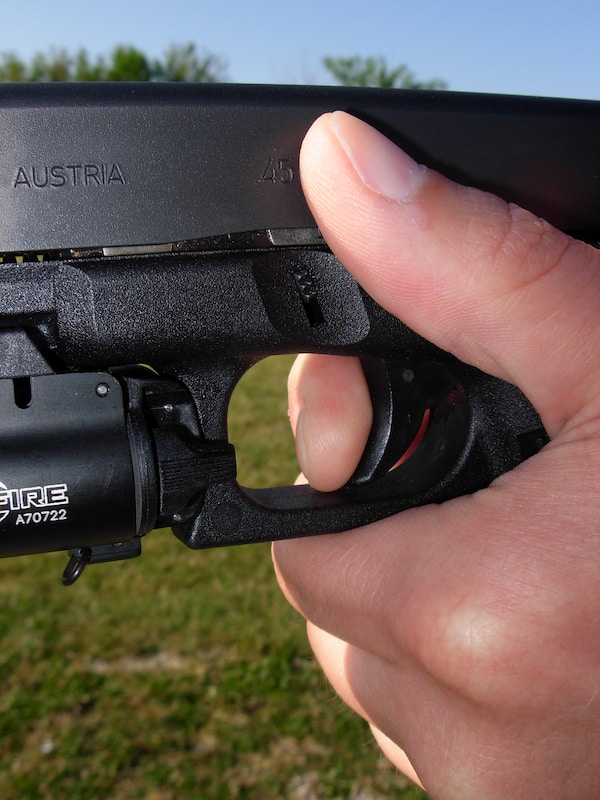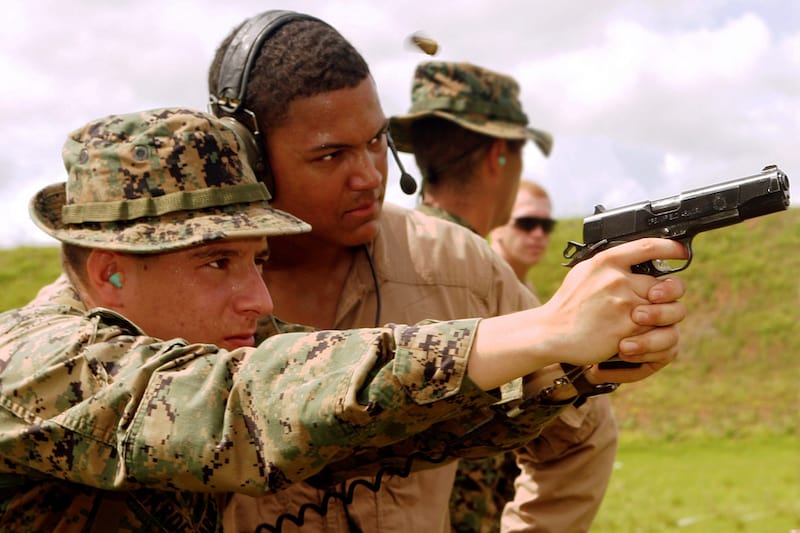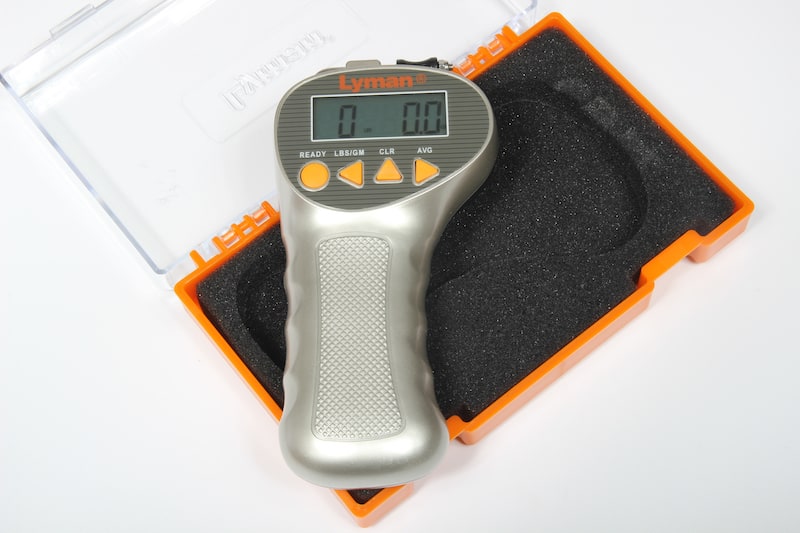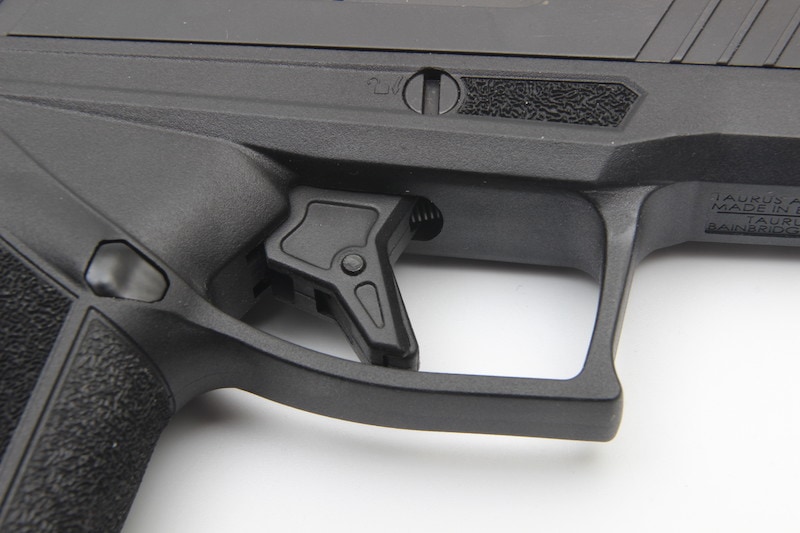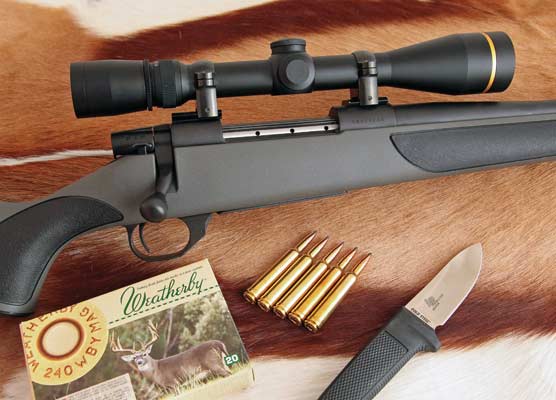Trigger Pull: The Key to Accuracy
It All Starts With A Finger
Believe it or not, shooting a rifle or pistol accurately is very simple — you obtain proper sight alignment, properly squeeze the trigger and then follow through on both things. As the old saying goes, “It’s simple but not easy.”
Regardless if the weapon is Pappy’s old horse pistol or a tricked-out .50 BMG sniper rifle, these rules are proven and inviolable. The concepts are basic, but the application of those ideas can be difficult. This is why very few people leave the shooting range with a single ragged hole in the target.
The Foundation
The basic goal of marksmanship is accuracy. A missed shot is utterly worthless and can be dangerous to your self-esteem, wallet, freedom or life. Though the definition of accuracy is somewhat subjective depending on the weapon, ammunition, distance, support/position and shooter, the end result can always be improved through attention to these basic fundamentals of shooting.
While sight alignment and follow-through are worthy topics, today we’re going to focus on trigger pull since it is arguably the single most important part of the whole shooting process.
“But why?” you protest. “It’s pretty simple — you pull the trigger, and the gun goes ‘BANG!’ End of story, right?”
Not so much. Though it seems improbable, your actions on the trigger have a significant effect on the flight of the bullet. The reason makes plenty of sense if you consider the simple physics — when you slap, slam or otherwise badly maul the trigger, you are actually setting the gun into motion before the bullet leaves the barrel. It might be an almost imperceptible movement, but the results clearly show up downrange.
For example, suppose you violently jerk the trigger because of bad habits or an unconscious anticipation of recoil. This might cause the gun to move in an ever-so-slight downward arc, and by the time the bullet reaches one hundred yards downrange, it is gouging some nice furrows in front of the target. You could always start a nice garden there…
Most of the time, things aren’t quite so dramatic, but the concept is the same. As you will rarely fire the gun in exactly the same manner every time, your shots end up all over the place.
Seeking Perfection
The perfect trigger pull allows the gun to remain motionless throughout the firing cycle, until after the bullet has left the gun and can no longer be influenced by a jerk on the trigger (both figuratively and literally). In order to develop this type of perfection, you must develop the ability to steadily squeeze the trigger without starting, stopping, jerking, mashing, yanking, slamming, jamming or otherwise varying in the effort.
On some firearms the trigger break will come as a surprise, much like the proverbial glass rod cracking. On others, it will feel like you are pushing a concrete block up a long sandy ramp. Regardless, you must strive to pull the trigger with a steady, unwavering motion, the same way every time. Anything else simply won’t work if you want accurate results.
Finger placement on the trigger is important. With most rifles and single-action pistols, placing only the pad of your finger on the trigger works best. Putting any more of your digit onto the trigger will likely cause the weapon to move in some unintended direction as you fire it. You also want to place your finger so it engages the trigger at a 90-degree angle to the bore of the gun as other angles tend to impart varying degrees of muzzle movement.
When shooting a double-action revolver or pistol, you’ll need to place the first joint of your finger on the trigger in order to have enough strength to pull the heavier trigger. It’s more challenging to maintain proper trigger squeeze, but it is possible.
With practice, you will be able to almost tell the exact instant the hammer will fall on your particular gun. Once you’ve reached this level of proficiency, avoid the temptation to “Stage the trigger,” as anticipation of the shot is another common contributor to poor accuracy. Don’t worry about exactly when the gun will fire. Just start and keep squeezing the trigger — properly — until it happens.
Flying Finger of Fate
Another common problem is allowing your finger to fly off the trigger after the shot. This will cause difficulties with the follow-up shots because your finger essentially gets a running start from somewhere out in left field, then slams down on the trigger and causes the shot to end up who-knows-where. Instead, just allow the trigger to go far enough forward to reset the action and no further.
Dry-firing practice is an excellent way to hone your trigger control. After making triple-sure your gun is unloaded and pointed in a safe direction, practice pulling the trigger on the empty chamber. If the gun moves at all, start over. An old trick is to balance a dime on the barrel and see if you can pull the trigger without disturbing the coin. Of course, with modern pistols such as GLOCK, you could run a marathon and never dislodge the dime, so don’t cheat yourself!
A great way to practice dry firing is by using technological aids such as those made by Mantis. I’m a huge proponent of the Mantis X10 Shooting Performance System and I use it weekly for practice, even if I have been to the range.
One final caution: NEVER attempt to lighten or otherwise “clean up” a trigger yourself without proper training. Though a skilled gunsmith can perform an action job to make the trigger “better” (crisper), allowing a buddy to lighten up the trigger pull or, God forbid, taking a file to the action yourself can result in a smoother trigger. Or, more likely, it’ll end up in a malfunctioning gun or a negligent discharge, resulting in tragedy. Just don’t mess around with trigger assemblies!
Though it might seem like a small thing, trigger pull is the keystone to the entire shooting process. If you can master the simple but not easy task, you will be light years ahead of most shooters.
Want more online exclusives from GUNS Magazine delivered straight to your inbox? Sign up for our FREE weekly email newsletters.
